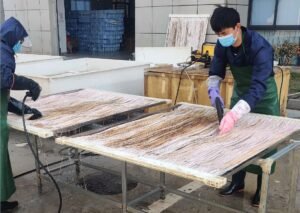Last Updated on July 24, 2022 by Kevin Chen
Many municipal sewage treatments and industrial sewage treatments use MBR membranes. The MBR membrane can effectively intercept many pollutants. Customers often ask whether the MBR membrane can remove cod in sewage and how high the cod removal rate is. Let’s take SPERTA’s MBR membrane as an example to analyze the removal rate of cod by MBR.
What Does COD mean?
COD refers to the chemical oxygen consumption in sewage. Under certain conditions, the amount of oxidant consumed by oxidizing reducing substances in 1 liter of the water sample is used as an index, which is converted into the milligrams of oxygen required after every liter of the water sample is wholly oxidized, expressed in mg/L. It reflects the degree of contamination of water by reducing substances. This indicator is also used as one of the comprehensive indicators of the relative content of organic matter.
When the raw water cod is very high, it will increase the load of the sewage treatment process, disrupt the regular operation of the water treatment cycle process, and the quality of the produced water will decline. If cod does not fully explain the direct discharge, it will cause the natural water quality to be anaerobic, and the water body will turn black and stink. Many countries have clear regulations on the cod content of sewage discharge, which shall not be directly discharged. Therefore, many industrial enterprises use MBR membranes to treat sewage and reduce cod content.

Can MBR membrane remove COD?
Yes, the MBR membrane can remove the COD in the sewage.
The MBR membrane adopts a unique design process and is made of hollow fiber material. According to different water production requirements, there are curtain MBR membranes and flat sheet MBR membranes. The aeration tank, sludge circulation tank, reaction tank, and other processes can achieve a high-efficiency cod removal rate in the sewage treatment process.
Under the condition that the influent water quality meets the requirements, the removal rate of MBR membrane for municipal wastewater cod is less than 30mg/L, and the removal rate for industrial wastewater is more than 90%.
How to improve the COD removal rate?
- The design of the MBR membrane operation process is carried out according to the influent water quality. When the bod and cod content in the influent water is higher, the design flux of the corresponding MBR membrane group is lower.
- To strengthen the pretreatment process, a sedimentation tank and anoxic tank will be designed in front of the MBR membrane tank. To effectively remove the cod content of the final produced water, it is essential to strengthening the pretreatment process.
- Adjust the sludge discharge volume of the MBR membrane. After the MBR membrane tank runs for some time, a certain amount of sludge will accumulate. The excess sludge should be discharged as soon as possible by the discharge pump so as not to reduce the MBR membrane performance and the COD removal efficiency.
- Suppose it is a newly installed MBR membrane, since the protective agent will be used in the membrane element when it leaves the factory. In that case, the cod content of the produced water will be high when it is put into use at the initial stage, and it needs to be fully backwashed and aerated.
Different brands and design processes have subtle differences in the COD removal rate when the MBR membrane is running. And in the actual selection and application, the COD removal rate of the MBR membrane will be affected due to changes in water quality and environment. The operator needs to adjust the parameters or clean the MBR membrane at any time according to the water quality of the produced water.








